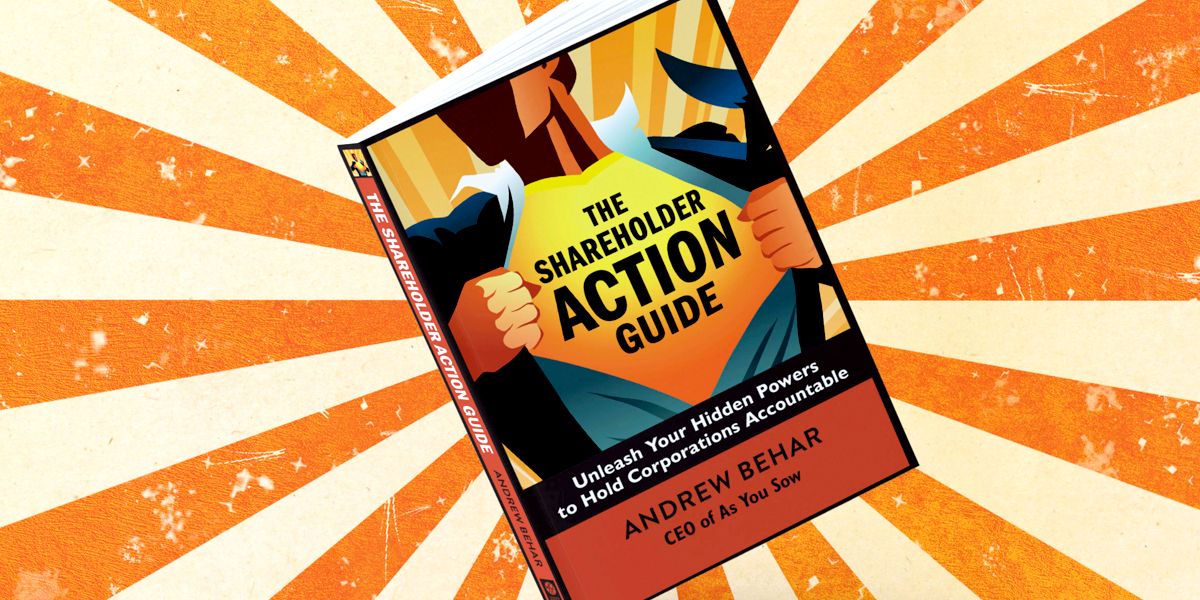

This is an excerpt from The Shareholder Action Guide, which will be released by Berrett-Koehler Publishing on Nov. 15. It is available for pre-order on Amazon.com.
A classic example of a negotiation with a notoriously tough corporation that was quite heated (but ended up with a positive change) took place leading up to May 2, 2007, when Apple CEO, Steve Jobs, made the public statement on the Apple website, “Today is the first time we have openly discussed our plans to become a greener Apple. It will not be the last. We apologize for leaving you in the dark for so long.”
This was the first time that Apple had publicly addressed the issues of electronics waste and hazardous materials.
How did this change come about? Jobs’s reputation as a corporate leader that refused input from anyone—especially his shareholders—is famous. Yet, this announcement came shortly after shareholder resolutions on electronic waste were filed and he had a meeting with the lead proponents. What happened in that negotiation?
Some background first: as the information age got into full swing, it became apparent that a mountain of electronic waste (e-waste) was forming. The manufacture of one computer workstation required more than 700 chemical compounds, about half of which were hazardous, including arsenic, brominated flame retardants, cadmium, hexavalent chromium, lead, and mercury. Tens of millions of computers, monitors and cell phones were being discarded every year, most headed straight to the landfill even though they contained valuable precious metals like gold and silver, as well as problematic ones like lead and cadmium that leached into the water and air.
Ever Wonder What's Happened to the More Than 570 Million #iPhones Sold Since 2007 https://t.co/8zNGAUxJfG @ewg pic.twitter.com/p5JwaTs5tL
— EcoWatch (@EcoWatch) February 24, 2016
As You Sow‘s work on e-waste began in 2003, led by Senior Vice President Conrad MacKerron, who formed a coalition of socially responsible investing allies including Calvert, Green Century, Pax and Walden Asset Management to press major brands like Dell, Hewlett-Packard (HP), IBM and Apple to set e-waste take-back goals. Dell, already under pressure from a grassroots campaign, committed to a take back goal in 2004. Later that year HP, which had an initial take-back program operating, accelerated its goal, pledging to recycle one billion pounds of e-waste by 2007.
But Apple, in the process of moving from innovative creator of the Mac to a global electronics powerhouse dominating the personal electronics market, was typically silent and not open to dialogue. MacKerron reached out to former Vice President Al Gore, who was on the Apple board. Several shareholder proposals were filed. Still, there was no progress. Finally, at the 2006 shareholder meeting, Executive Director Larry Fahn was able to engage Steve Jobs in a friendly discussion as the resolution was presented, and Jobs agreed to meet and see if progress could be made. The shareholder proposal asking Apple to improve its e-waste policies received a decent vote of 10 percent of shares voted.

The meeting with Jobs would not occur until almost another year passed. In February 2007 MacKerron, Fahn, research associate Nishita Bakshi, and As You Sow board chair Thomas Van Dyck met with Jobs in his Cupertino office. True to form, Jobs offered brilliant insights but was also caustic, at times berating his visitors for overstepping their boundaries and railing against Greenpeace, which had launched a campaign for Apple to phase out toxins in its components, before acknowledging the recycling problem. The shareholder team held firm that an e-waste take-back policy was good for Apple and that competitors were way ahead.
At one point, Jobs dismissively tossed a presentation the group’s staff had spent weeks preparing back across the table at them. It was time to improvise. Van Dyck and other team members launched into a series of questions during the meeting to find out where his top concerns were. They recall asking Jobs if he believed having a greener Apple would sell more products. He said no. The team asked, if Apple was perceived as an environmental laggard, might it sell less products? Jobs said, yes. He felt that his shareholders, employees, and community deserved better from Apple, and he wanted to beat his competitor Michael Dell of Dell Computers, which had already announced strong electronic waste take-back goals. The team saw that he was frustrated by Dell as a competitor, and despite his ire, by the end of the meeting, Jobs agreed to develop a strong recycling commitment. Three months later, the company announced goals as part of a broad set of environmental commitments known as “A Greener Apple.”
The move came just a week before shareholders would have voted on another resolution asking Apple to report on improving e-waste take-back efforts, underscoring the importance of shareholder pressure. As You Sow withdrew the proposal in acknowledgement of the company’s commitments, and an uncharacteristically chastened Jobs apologized to shareholders for not previously sharing its environmental policy plans when he was quoted in Waste News, on May 14, 2007: “It is generally not Apple’s policy to trumpet our plans for the future. Unfortunately, this policy has left our customers, shareholders, employees and the industry in the dark about Apple’s desires and plans to become greener. So today we are changing our policy.”

 233k
233k  41k
41k  Subscribe
Subscribe 